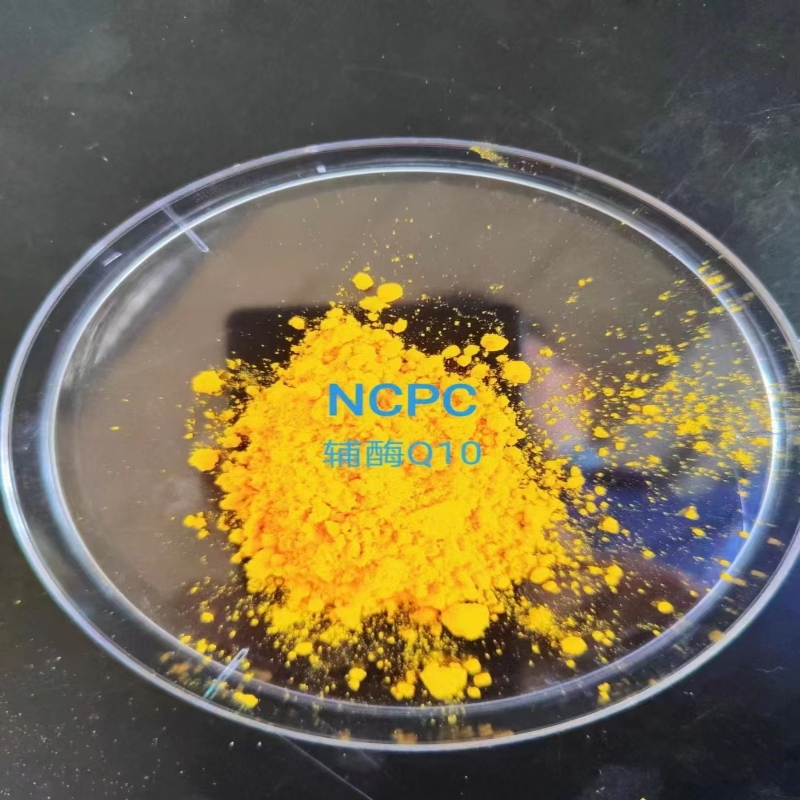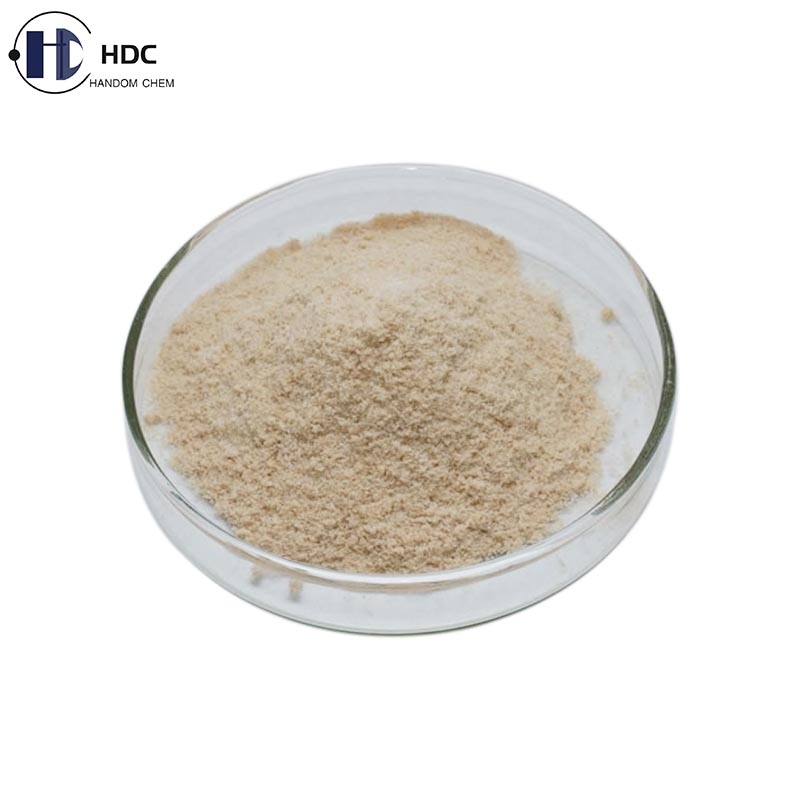[inventory] April 22, 2016 Science journal essence
-
Last Update: 2016-04-24
-
Source: Internet
-
Author: User
Search more information of high quality chemicals, good prices and reliable suppliers, visit
www.echemi.com
April 24, 2016 / BIOON / - another issue of Science Journal (April 22, 2016) was released this week What are the highlights of its research? Let Xiaobian come together 1 Science: in a new study, researchers from the University of Pennsylvania in the United States used a new high-resolution microscope to discover the mechanism of microtubule de tyrosinization to control the beating of cardiac myocytes, MT) molecular struts interact with the contractile mechanism of the heart to resist the beating of the heart Their findings may have implications for a better understanding of how microtubules affect the mechanisms in the beating center and what happens when this goes wrong The relevant research results were published in the April 22, 2016 issue of science, and the title of the paper was "detyrosinated microtubbles buck and bear load in contracting cardiometrics" Direct observation of microtubules during contraction is the most direct way to understand their role in cardiac function In this study, the researchers looked at the temporal and spatial changes in microtubule shape during cardiac contraction In addition, recent studies have suggested that the chemical changes in microtubules, known as de tyrosination (the removal of tyrosine chemical groups), regulate mechanical transduction, but it is still unknown how it regulates During contraction, some rigid microtubules must adapt to the shape change of cardiomyocytes to some extent In this study, the researchers found that in typical cardiomyocytes, this shape change is realized by the deformation of microtubules to form a curved spring shape, which will return to the same relaxation state after each beat The microtubules are directly connected to a contraction mechanism called sarcomere This connection is at least partially achieved by a protein called desmin, which anchors the microtubule to the sarcomere, allowing the microtubule to form a grid like structure The physical connection between microtubules and sarcomeres is highly dependent on de tyrosination, so the researchers adjusted the microtubule sarcomere system to find its most vulnerable connection location They found that when sarcomere shrinks for a short time, microtubules adapt to contraction by sliding between them rather than bending Destruction of microtubule sarcomere interactions allows sarcomere to also allow cardiomyocytes to shorten further and faster, thereby reducing the overall hardness of such cells Instead, they found that increased de tyrosination increased the hardness of cardiomyocytes and prevented them from contracting "It's a moment of seeing for seeing," said Ben Prosser, Ph.D., a correspondence author and associate professor of physiology at the University of Pennsylvania's Perelman School of medicine at Pennsylvania muscle college We can now really see how too many hard microtubules can damage the heart over time Our bioengineering colleagues accurately measured the effect of microtubules on the mechanical structure of cells, and mathematically quantified how this affects the performance of cardiomyocytes " (Science, 22 APR 2016, DOI: 10.1126 / science Aaf0659) 2 Science: two transcription factors were found to guide immune cells to reside in tissues in a new study Researchers from the University of Melbourne and other institutions in Australia found genes responsible for resistance to infection at the invasion sites of skin, liver, kidney and intestine in vivo The study was led by Axel kallies and Klaas van gisbergen from the Walter and Eliza Hall Institute of medical research in Australia and Laura Mackay from the University of Melbourne in Australia The researchers identified two transcription factor coding genes, hobit and BLIMP1, and found that these two genes control a universal transcription program, which is responsible for recruiting immune cells existing in tissues to the "front line" of the body against infection and cancer The relevant research results were published in the April 22, 2016 issue of Science Journal The title of the paper is "hibit and BLIMP1 instrument a universal transcription program of titanium residence in lymphocytes" The immune cells in these tissues are significantly different from the corresponding cells circulating in the blood The immune cells in these tissues are the key to local resistance to viruses and bacteria The researchers confirmed in mice that the transcription factor hobit was specifically up-regulated in the tissue resident memory T cell (TRM cell, a kind of face-to-face cell in vivo), and together with the transcription factor BLIMP1, it regulated the development of TRM cells in skin, intestine, liver and kidney This hibit BLIMP1 transcription component is also necessary for other tissue resident immune cells, such as natural killer T cells and liver resident natural killer cells In summary, hobit and BLIMP1 guide these immune cells to reside in a variety of tissues (Science, 22 APR 2016, DOI: 10.1126/science.aad2035) 3 Science: what? B cells also need to rest after "intense exercise" or they will die of exhaustion in a new study Researchers from the Babraham Institute in the UK report that B cells use a new mechanism to ensure that they fully rest between intense developmental events The relevant research results were published in the April 22, 2016 issue of science, and the paper title was "RNA binding proteins zfp36l1 and zfp36l2 promote cell quiescence" Just as our daily life involves exercise time, nutrition supplement time and rest time, cell cycle describes that cells enter a series of States, leading to its division into two daughter cells Just as when we are on holiday, cells need to stop for a rest after they divide Researchers call it a resting state - a reversible resting state The researchers delved into how B cells, immune cells that make antibodies, go through multiple stages of development In particular, they looked at the role of two proteins in cells and how they can apply quiescence to cells to ensure that developing B cells' grow 'correctly The researchers confirmed that without these quiescent periods, B cells would not survive and become functional immune cells In mice, when B cells were deficient in these proteins, a 98% decrease in mature B cells was observed Dr Alison Galloway, the first author of the paper and a postdoctoral researcher at babahan Institute, explained that "we found two proteins, namely, RNA binding proteins zfp36l1 and zfp36l2, which promote the cell to enter the resting period by blocking the RNA information that tells the cell to start to divide again Similarly, we found it difficult to function without rest: if the cell cycle of B cells stops or is lost, then these cells cannot develop normally " (Science, 22 APR 2016, DOI: 10.1126 / science Aad5978) 4 Science: the key to seasonal influenza death in the elderly or inflammatory response a new study suggests that the death of the elderly due to influenza A virus infection (IAV) may be mainly caused by the destructive immune response to influenza A virus This recognition may lead to the development of new strategies for the treatment of influenza A for the most vulnerable patients The relevant research results were published in the April 22, 2016 issue of science, and the title of the paper was "MX1 reeals in nature pathways to antiviral resistance and lethal influenza disease" In this study, researchers from Yale University and other institutions found that replication of influenza A virus is not enough to promote seasonal influenza related deaths To understand why older people are more vulnerable, the researchers looked for the first time at the effects of influenza A virus infection on monocytes (also immune cells) from young and old people They found that monocytes from the elderly were significantly less able to secrete important antiviral proteins such as interferon "It confirms that older people may be more susceptible to influenza virus infection because they are not able to initiate an antiviral response," said Akiko Iwasaki, author of the paper's correspondence, a researcher at the Howard Hughes Institute of medicine and professor of immunology To test this view, the researchers constructed a model mouse that mimics the decreased immune response of the elderly and expresses the functional MX1 gene In particular, they blocked genes Mavs and TLR7 that allow the mouse immune system to detect influenza A virus, allowing the virus to replicate uncontrolled in the lungs, and they also suffered lung tissue damage They determined that the inflammation behind the tissue damage led to the death of mice infected with influenza A virus (Science, 22 APR 2016, DOI: 10.1126 / science Aaf3926) 5 Science: the first time to analyze the three-dimensional structure of Zika virus in a new study, researchers from Purdue University and National Institutes of health of the United States and National Institute of allergy and infectious diseases (NIAID) of the United States first resolved Zika virus, Zikv), which helps to develop effective antiviral drugs and vaccines Relevant research results were published online in the journal Science on March 31, 2016, and the paper title was "the 3.8-resolution cryo-EM structure of Zika virus" The corresponding authors are Richard Kuhn, director of the Institute of inflammation, immunology and infectious diseases, Purdue University, and Michael Rossmann, a well-known professor of Bioscience, Purdue University The researchers also identified different regions of Zika virus structure from other Flaviviridae, including Zika virus, dengue virus, West Nile virus, yellow fever virus, Japanese encephalitis virus and tick borne encephalitis virus The researchers found that the structure of all known Flaviviridae viruses differed in amino acids near a glycosylation site in the virus's coat This shell is composed of up to 180 copies of two different proteins (E protein and M protein) As with all proteins, Rossmann says, these molecules are formed by folding long chains of amino acids into special structures This glycosylation site (asn154), which is different from other Flaviviridae viruses, protrudes from the surface of the virus Through this site, a carbohydrate composed of many kinds of sugar molecules is attached to the protein surface of the virus (Science, 22 APR 2016, DOI: 10.1126 / science Aaf5316) 6 Science: scientists use natural genes to "knock out" humans to explore unknown gene functions Humans have about 20000 genes, but in fact, the functions of most genes have not been understood One way to understand the function of genes is to find out who is missing specific genes and see if they have health problems But such people are rare in the public A new study suggests a more effective way to discover the function of genes: DNA screening in people who are more likely to marry close relatives The study's genome data, from more than 3200 Pakistani British, contains thousands of genes that do not affect normal human life, including one that could lead to infertility in animal studies This study aims to find more healthy "gene knocks"
This article is an English version of an article which is originally in the Chinese language on echemi.com and is provided for information purposes only.
This website makes no representation or warranty of any kind, either expressed or implied, as to the accuracy, completeness ownership or reliability of
the article or any translations thereof. If you have any concerns or complaints relating to the article, please send an email, providing a detailed
description of the concern or complaint, to
service@echemi.com. A staff member will contact you within 5 working days. Once verified, infringing content
will be removed immediately.







